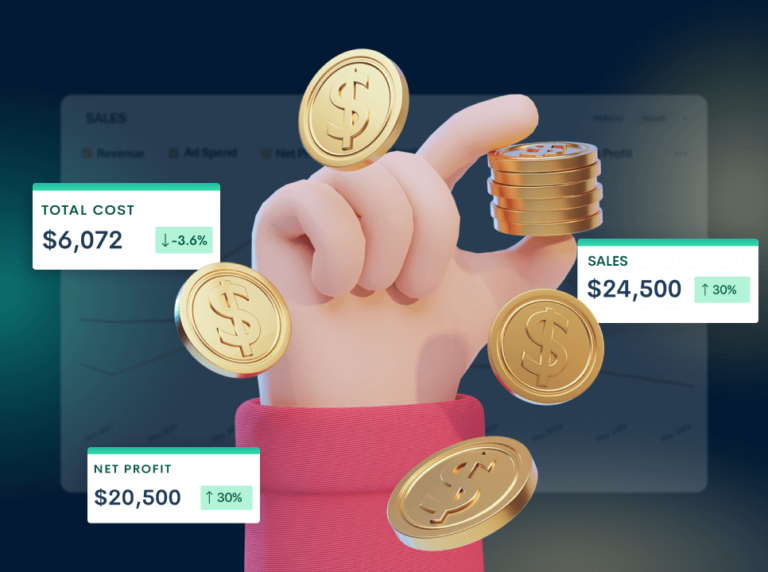Shopify Profit: How to Track It Properly [2023]
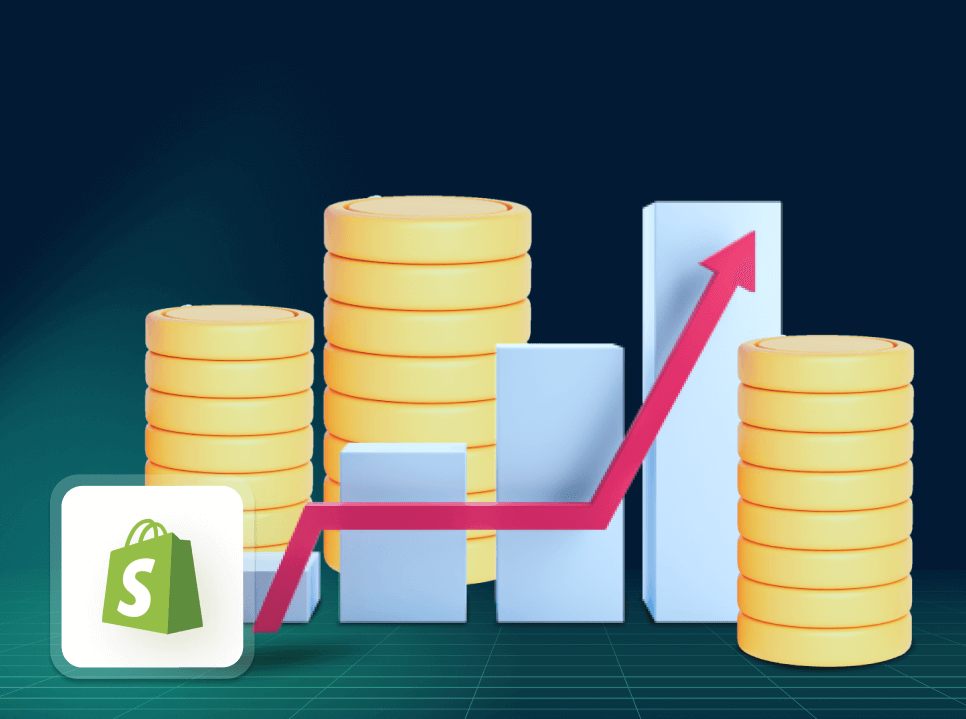
Tracking your Shopify profit is the first and most important thing you must closely monitor if you want to improve it. Measuring and keeping track of your profits will help you better understand how your store is doing and discover areas that need improvement.
It goes without saying that keeping track of your profits effectively is no simple task; for this reason, we created this blog.
In this blog, we will discuss, in detail, what profits need tracking, how to do that, and the profit margins you should achieve. Keep scrolling!
How To View Your Shopify Profit Insights?
To make sure we are on the same page, we think it’s important to clarify that Shopify provides analytics and report tools that help you track your profit. However, Shopify reports have several limitations.
You can access your gross profit and gross profit margin easily within your Shopify admin dashboard (we’ll show you how below). Unfortunately, Shopify does not offer a way to track your net profit or net profit margin.
This is sad news for any eCommerce business owners since these metrics serve as indicators of your online store’s overall financial health and reflect a clearer picture of your business performance.
Moreover, the Profit Reports are available only if your store is on the Shopify plan or higher. That means you must pay at least $105/ month to get this feature.
Not to mention that the information in your Profit Reports only applies to a particular period of time. So most Shopify store owners rely on Shopify profit tracker apps to track their store’s crucial metrics with the least effort.
For instance, you can install TrueProfit and instantly know all your store’s profits and losses in real time. TrueProfit integrates with top ad channels and shipping platforms to give you your exact profitability: net profit, gross profit, ad spends, COGS, custom costs, and more!
Track all your Profits & Losses in real-time
With TrueProfit, you can automatically monitor all your store’s important metrics in one place.

How to access your Shopify store’s gross profit?
For gross profit, you can easily find it right on your Shopify store by following the steps below:
- Step 1: Log in to Shopify account
- Step 2: Navigate to your admin panel and choose the Analytics option on the left side. Then, you will be prompted to the Overview dashboard.
- Step 3: Under the Analytics label, find and select the Reports option from the menu.
- Step 4: Find and click on the Gross profit section in the list of all financial metrics
- Step 5: The Gross profit summary will appear with the relevant information used to determine the number. You can get a table with all the orders by clicking on the Gross profit.
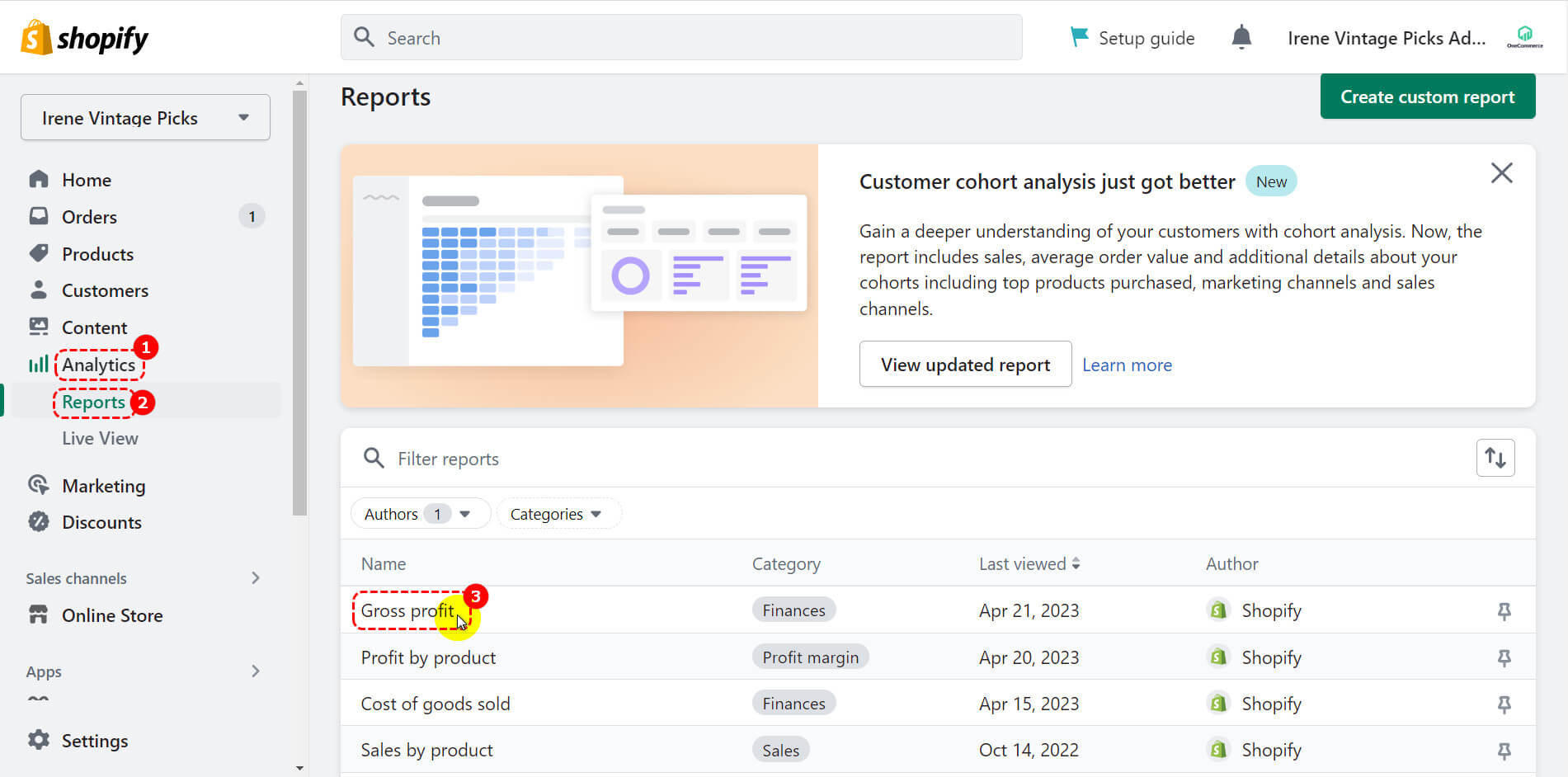
| Note: You must include the cost of each item you sell so that Shopify can accurately calculate the gross profit. Sales of items whose costs are not mentioned will be disregarded. |
How to access your Shopify store’s gross profit margin?
Another relevant metric that can be tracked with Shopify is the Gross Profit Margin metric. Here is the steps:
- Step 1: Log in to your Shopify account
- Step 2: Navigate to your admin panel and choose the Analytics option on the left side. Then, you will be prompted to the Overview dashboard.
- Step 3: Below the Analytics label, find and select the Reports option from the menu.
- Step 3: Choose Categories.
- Step 4: Choose Profit margin to limit the reports to those that just address profit margin.
By selecting the Profit by product or Profit by product variant SKU, you can also see the specific contributions of each product or variant.
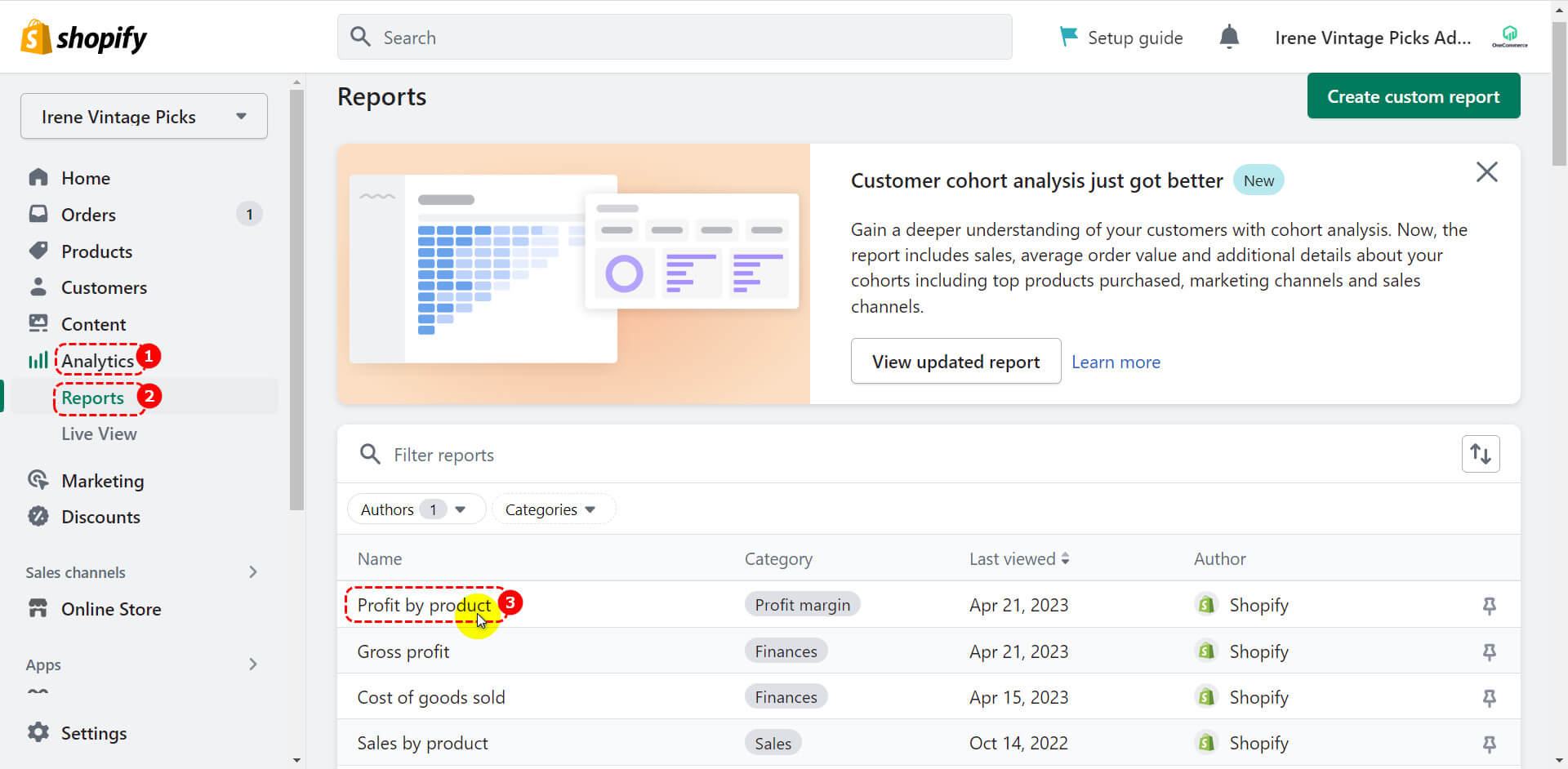
Then, the cost, gross profit, gross margin, and net sales will all be listed in a table. However, Shopify will only calculate this for the items whose costs were declared.
When you load the table, the products will be listed in descending order, starting with the one with the highest Shopify gross profit margin. You can use this to determine which products need more promotion.
Why Track Your Shopify Profit Margins?
It is crucial to constantly monitor your Shopify profit margin on a regular basis, yet above all – to do that accurately. When figuring up the profit margin for your Shopify store, there is no room for error.
By obtaining, calculating, and understanding the secret that your Shopify profit is telling you, you will be able to make data-based decisions. Data-based decision-making is the course of action to find the right track for your company, from what marketing channels to utilize to what items to sell more.
There are many profit margins to take into account, yet gross profit margin or net profit margin are those that should have your most attention. Each one tells you a different story, so you need to focus on both of them.
-
Why Track Shopify Gross Profit Margin?
Gross profit margin includes all variable costs incurred directly in the selling and marketing of your products while excluding overhead and fixed business costs.
Analyzing your Shopify gross profit margin is a great way to evaluate performance on a per-product or per-order basis since it takes into account all cost of products sold, and it can assist you in making business decisions on:
- The need for bargaining prices with your suppliers or hunting for different suppliers
- Whether to find less expensive shipping providers or bargain with existing ones for a better deal
- Choosing the most profitable products to invest in by expanding supply and marketing/sales activities for them
- Choosing the marketing channels with the best ROI to focus on to promote your products
You can evaluate how well your Shopify business is performing and how much cash you will have left to maintain the business by calculating your Shopify gross profit margin.
Naturally, your cash flow will improve if your gross profit margin is healthy. Otherwise, you will be more likely to experience cash flow issues once all of your fixed costs have been paid off.
-
Why Track Shopify Net Profit Margin?
Net profit margin shows the percentage of sales income your business retains after paying all of the expenses, including interest and taxes. This figure demonstrates how effectively your business turns income into profit.
Having said that, it is one of the most crucial measures of your business’s overall financial health because:
- It helps you with management-level decision making
- It assists investors in determining whether your business management is making a sufficient profit from sales and whether operating and overhead costs are in check
- It can be used to assess lending decisions since it accurately depicts your business’ potential net worth based on earnings.
Overall, net profit margin offers more comprehensive, insightful information on the basic profitability and financial health of your Shopify business.
What Is a Good Profit Margin For Your Shopify Store?
The nature and type of the company, the level of competition, and other elements all affect the profit margin for your Shopify business.
According to a report by Aswath Damodaran, a Professor of Finance at the Stern School of Business at New York University, as of January 2023, in the US, these are the Top 3 industry niches that have the highest and lowest gross margin and net margin:
| Average Gross Profit Margin By Niche | |
| Highest | Lowest |
|
|
| Average Net Profit Margin By Niche | |
| Highest | Lowest |
|
|
-
What is a good Shopify gross profit margin?
According to the data from the above report, we can calculate that an average gross profit margin is 41.54%. Having said that, the higher the margin, the better!
In fact, the general rule of thumb in the online marketplace is that the gross profit margin between 50 and 70% is regarded as “good.” Hence, we recommend you should maintain your Shopify gross profit margin at this level.
-
What is a good Shopify net profit margin?
Generally speaking, net profit margin is usually lower than gross margin (the converse would only occur in exceptional circumstances, such as a significant non-operating windfall, such as damages obtained in a legal case).
It is because the net profit margin totals all costs while the gross profit margin just takes into account COGS. So, you should expect a lower number!
Shopify discovered that the average net profit margin for eCommerce businesses is 10%. This figure has subsequently been used as the standard for healthy net profit margins. The platform also says that high net profit margins currently hover around 20%, while low margins are at 5%.
Frequently Asked Questions
-
Is owning a Shopify store profitable?
Although using Shopify as your platform doesn’t ensure financial success, it is unquestionably a good place to start for your business. With more than 58 million visits from customers in 2020 and a remarkable yearly growth rate of more than 200% from 2020 to 2022, Shopify is a reputable marketplace.
This means that Shopify will give you many opportunities for success as long as you know how to use Shopify effectively.
-
What is a typical shop profit margin?
Generally speaking, a company’s profit margin is usually between 7% and 10%.
-
How much does the average Shopify owner make?
According to a survey conducted in July 2022 of 2,608 Shopify stores, each customer generates an average total revenue of $90 for a Shopify merchant.
Having said that, if your business falls within the median area, you can anticipate earning roughly $90 in Shopify income for every new customer you bring in. Meanwhile, the top 10% of Shopify stores can bring in $343 on average for each customer.
-
How many Shopify stores actually make money?
Around 5% to 10% of Shopify’s eCommerce stores are successful. This indicates that just 5 to 10 out of every 100 enterprises using Shopify are actually making money.
Conclusion
Now that you have the Shopify profit numbers in your hands, you can analyze them and interpret what this data is trying to teach you. Then, you can take the necessary steps to increase your profitability.
Achieving a good Shopify profit margin is not easy since it depends on various factors such as your sector, product, price strategy, etc. Nevertheless, it is always advantageous for your business to keep track of your Shopify profit in any way.
Discover what proper profit tracking looks like at trueprofit.io
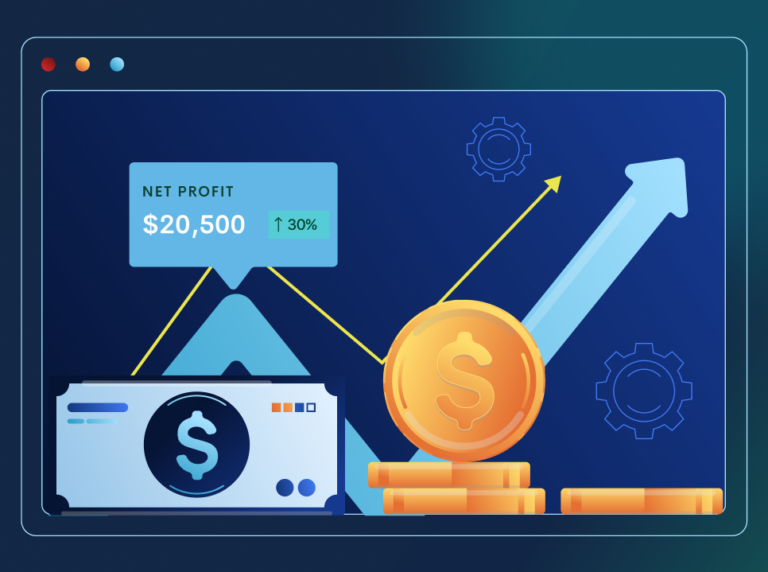
![Incremental Margin: All You Must Know About [Tool Suggested]](https://trueprofit.io/wp-content/uploads/2023/04/incremental-margin-768x572.png)
